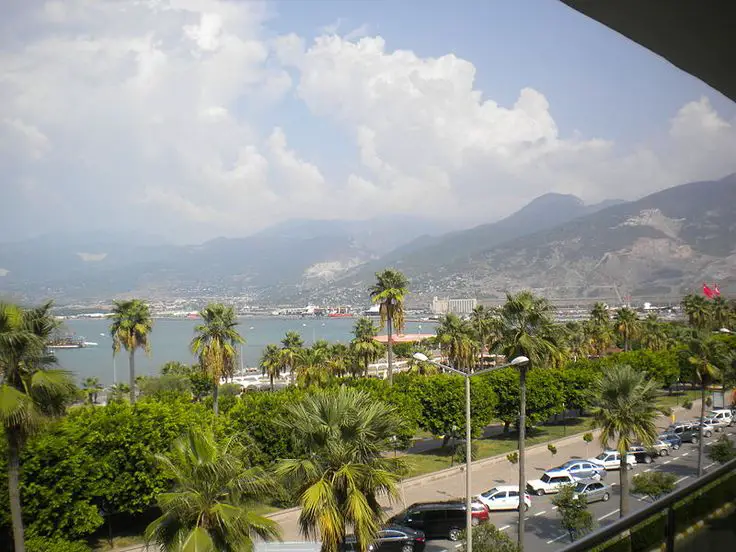Have you ever wondered what Turkey’s winter looks like? Do you imagine snow-capped mountains and cold, cozy nights? Then you’ll be surprised to learn that the answer is a resounding yes! In Turkey, winter means snowfall. Although some areas are warmer than others, many places in Turkey experience snowfall during the winter months.
In this blog post, we will take a closer look at the geography and weather patterns of Turkey to understand why it experiences such snowy winters.
Geography of Turkey and its climate zones
Turkey, with its unique location bridging Europe and Asia, boasts a diverse geography that influences its climate zones. From the snow-capped peaks of the eastern mountains to the mild coastal regions along the Mediterranean and Aegean seas, Turkey’s landscape plays a significant role in its winter weather patterns.
In the eastern part of the country, the high Taurus and Pontic mountain ranges create a barrier for the cold air coming from the north, resulting in heavy snowfall during the winter months. These mountains provide ideal conditions for skiing and winter sports enthusiasts.
Moving westward, the Central Anatolian Plateau experiences colder winters due to its high elevation, while the coastal regions have milder temperatures thanks to the moderating effects of the sea.
The Black Sea region, with its humid climate, receives abundant precipitation, often turning into snow during the winter. The mountainous areas in the northeast receive the highest snowfall, creating a winter wonderland that attracts both locals and tourists.
Understanding the geography and climate zones of Turkey helps explain why the country experiences such snowy winters, making it a perfect destination for winter adventures and picturesque landscapes.
Historical snowfall in Turkey
Turkey has a rich history when it comes to snowfall. Throughout the years, the country has experienced varying levels of snowfall, with some years seeing heavier snowstorms than others. Historical records show that certain regions of Turkey have consistently received significant snowfall during the winter months, while others have experienced more sporadic snow events.
For example, the northeastern region of Turkey, particularly the provinces near the Black Sea, have a long-standing reputation for heavy snowfall. These areas, including cities like Rize and Artvin, often get covered in a thick blanket of snow during winter. On the other hand, regions like Istanbul and Izmir along the western coast may experience snowfall occasionally, but it is generally less frequent and less intense compared to the northeast.
Historical snowfall in Turkey has not only shaped the landscape but also influenced various cultural practices and traditions. From building snowmen to engaging in winter sports like skiing and snowboarding, the Turkish people have learned to embrace and enjoy the snowy weather.
So, if you’re a snow enthusiast looking for a winter wonderland, Turkey has a rich history of snowfall and offers plenty of opportunities for snow-filled adventures.
Regions with the highest snowfall in Turkey
When it comes to snowfall, Turkey has some regions that truly stand out. These areas receive the highest amount of snow in the country, transforming into magical winter wonderlands that attract visitors from all over the world.
One such region is the northeast, particularly the provinces near the Black Sea. Cities like Rize and Artvin are known for their heavy snowfall during the winter months. These areas are blessed with abundant precipitation that often turns into snow, covering the landscape in a thick, pristine white blanket. The picturesque scenery and untouched nature make it a dream destination for snow lovers and outdoor enthusiasts.
Another region that experiences high snowfall is the eastern part of Turkey, including areas near the Taurus and Pontic mountain ranges. The combination of high elevation and cold air from the north creates perfect conditions for heavy snowfall. This attracts skiers and snowboarders looking for thrilling adventures on the slopes.
Overall, these regions offer a winter paradise for those seeking snowy landscapes and outdoor activities. Whether you’re a nature lover or an adrenaline junkie, the regions with the highest snowfall in Turkey have something special to offer.
Ski resorts in Turkey
If you’re a winter sports enthusiast, then Turkey has got you covered! This country boasts some incredible ski resorts that offer a wide range of slopes and activities for all levels of experience. From beginners to seasoned pros, you’ll find something to suit your taste.
One popular ski destination is Uludağ, located near Bursa in northwestern Turkey. It’s the country’s oldest ski resort and offers a variety of ski runs and snowboarding opportunities. With its stunning natural beauty and well-maintained facilities, Uludağ attracts both locals and international visitors.
If you’re looking for a more remote and off-the-beaten-path experience, consider heading to Palandöken in the eastern part of the country. This resort is known for its long and challenging ski runs, making it a favorite among advanced skiers. The breathtaking views of the surrounding mountains only add to the thrill of skiing in Palandöken.
For those who prefer a more laid-back and family-friendly atmosphere, the ski resorts in the Kartepe and Davraz regions are worth considering. These resorts offer a range of slopes suitable for beginners and intermediate skiers, as well as other activities like snowshoeing and tubing.
No matter which ski resort you choose, Turkey’s ski season typically runs from December to April, providing ample opportunities for winter fun. So, pack your skis or snowboard and get ready to hit the slopes in Turkey’s stunning winter wonderland!
Snow-related activities and festivals in Turkey
Snowfall in Turkey not only creates a stunning winter landscape but also sets the stage for a variety of snow-related activities and festivals that are guaranteed to bring joy and excitement to both locals and tourists.
One popular activity is skiing. Turkey is home to numerous ski resorts, offering a range of slopes for skiers of all levels. From thrilling runs in Palandöken to family-friendly slopes in Kartepe and Davraz, there’s something for everyone. Imagine the exhilaration of gliding down snow-covered mountains, surrounded by breathtaking scenery.
In addition to skiing, snowshoeing is a popular activity for those looking to explore the snowy landscapes. Strap on a pair of snowshoes and venture into the winter wonderland, immersing yourself in the serene beauty of nature.
But it’s not just about physical activities. Turkey also hosts several snow-related festivals throughout the winter months. From snow sculpture competitions to snowball fights and even winter carnivals, these festivals offer a chance to embrace the snow and celebrate the magic of winter.
So, whether you’re seeking adventure on the slopes or looking to participate in snow-themed festivities, Turkey has plenty to offer in terms of snow-related activities and festivals. Get ready to experience the joy and wonder of winter in this beautiful country.
Climate change and its impact on snowfall in Turkey
Climate change is a global issue that is impacting various regions around the world, including Turkey. As temperatures rise and weather patterns shift, the snowfall in Turkey is also being affected. The changing climate has resulted in noticeable changes in the country’s winter weather.
One of the main impacts of climate change on snowfall in Turkey is the decrease in overall snowfall levels. Warmer temperatures are causing more precipitation to fall as rain rather than snow. This not only affects the aesthetics of the winter landscape but also has implications for winter sports and tourism.
Furthermore, climate change is causing shifts in the timing and duration of the winter season. In some areas, the winter season is becoming shorter, with milder temperatures occurring earlier and snowfall decreasing in frequency. This poses challenges for ski resorts and winter tourism industries that rely on consistent snowfall.
In addition to the direct impact on snowfall, climate change can also lead to increased variability in weather patterns. Extreme weather events, such as heavy snowstorms or unseasonably warm spells, may become more common. These fluctuations can disrupt daily life, transportation, and agricultural activities.
As climate change continues to unfold, it is crucial for Turkey and other countries to address this issue and take steps to mitigate its impacts. Sustainable practices and efforts to reduce greenhouse gas emissions are necessary to preserve the beauty and uniqueness of Turkey’s snowy winters for future generations to enjoy.



